Configuring Drupal for Posting from External Blogging Applications
An external blogging application like Windows Live Writer will allow you to create and publish posts from your desktop to your Drupal site. But, before you can post via one of these applications you’ll need to enable and configure your Blog API module and a few additional settings.
Step 1: Enable the Modules
Enable your Blog and Blog API modules here: admin/build/modules
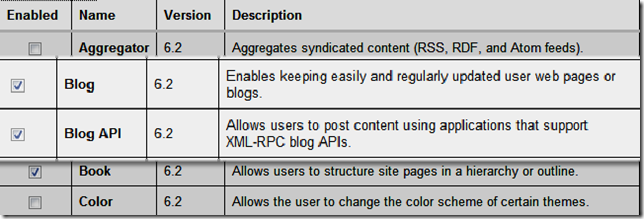
Step 2: Make Content Types Available to External Clients
Select the content types you’d like to make available to external blogging clients: admin/settings/blogapi
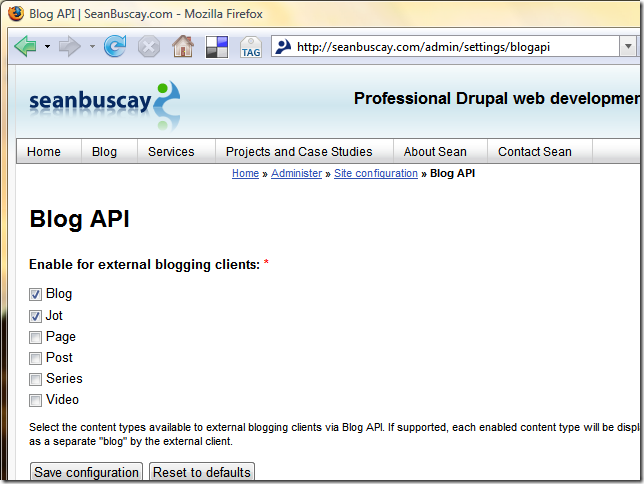
Step 3: Create Roles to Post Content via the API
Create the roles you’d like to give external blogging privileges to: admin/user/roles
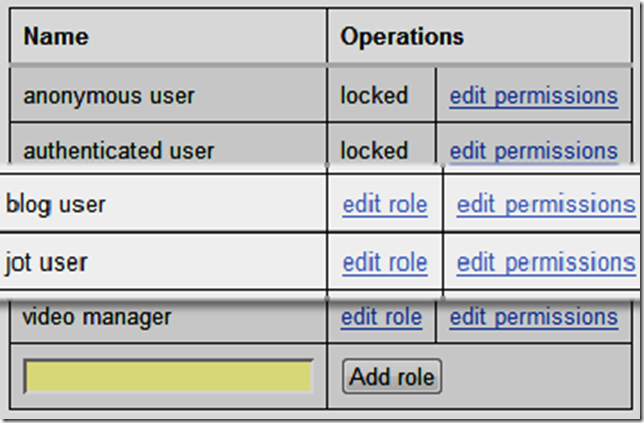
Notice, in the screen shot example, I have created two roles. One called, “blog user” and another called, “jot user”. This will allow me to assign separate permissions for two different content types. Yes, you are not stuck with just adding blog posts via an external client.
In this example, I’ll allow some users to post jots and other users to post blog entries. I can also give some users permissions to post to either content type.
Step 4: Set Up Your Permissions, Don’t Forget the Blog API Permission
Now assign posting permissions to your roles:admin/user/permissions
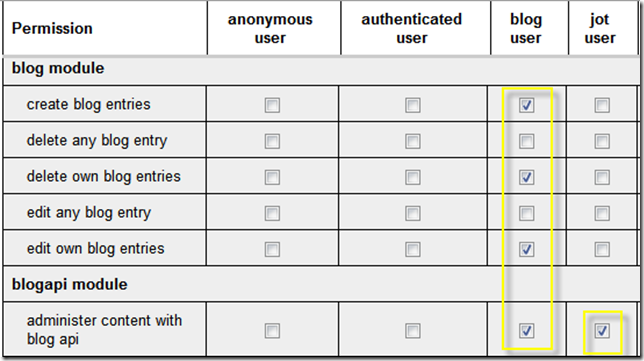
I have given both the “blog user” role and the “jot user” role permission to administer content with the blog API. Don’t forget this step.
I have given the “blog user” role permissions to:
- create blog entries
- delete own blog entries
- edit own blog entries
- create jot content
- delete own jot content
- edit own jot content
I have also given the “blog user” permission to upload files.

However, I have not given these permissions to the “jot user”.
I want to allow both users to post content via an external blogging application but I want to separate my permissions for posting blog entries and posting jots, so I may assign them separately to various users.
In the node module section of the permissions page I can manage role permissions for my custom content type called, “jot”.
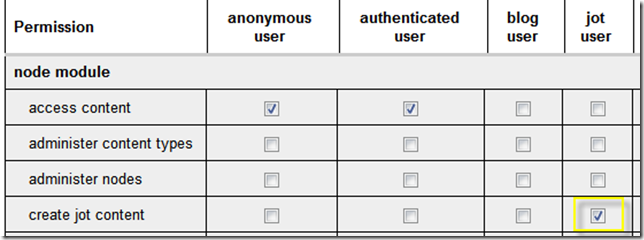
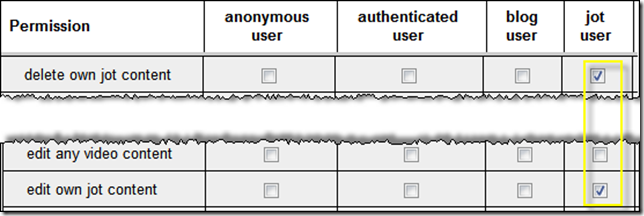
I have given my “jot user” role permissions to:
Step 5: Assign Permissions to Users through Roles
Now, let’s give a user permission to post blog entries.
Edit the user’s account:user/<user id>/edit
Where <user id> is the user id number for the specific user you want to edit.
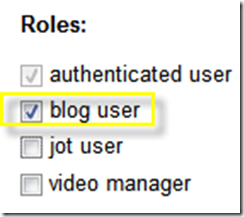
Check the “blog user” check box under the “Roles” section to assign your user to that role.
To give a user permission to post jots, select the “jot user” check box.
Tip
You can get to a user’s account edit page, by starting from: admin/user/user
View your table of users, sort by username, status, or other dimensions and then click “edit” in the “Operations” column to edit the user’s account.
Success
And that’s it. You have successfully Configured Drupal for posting from external blogging applications.
Share or Comment via Twitter